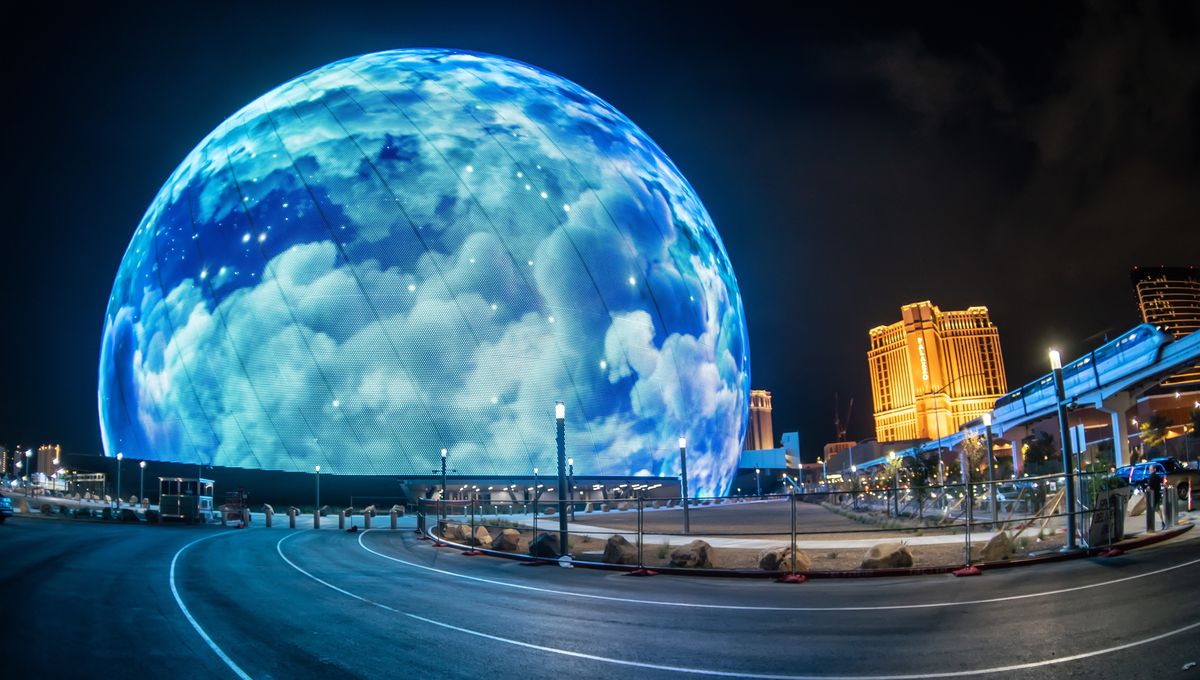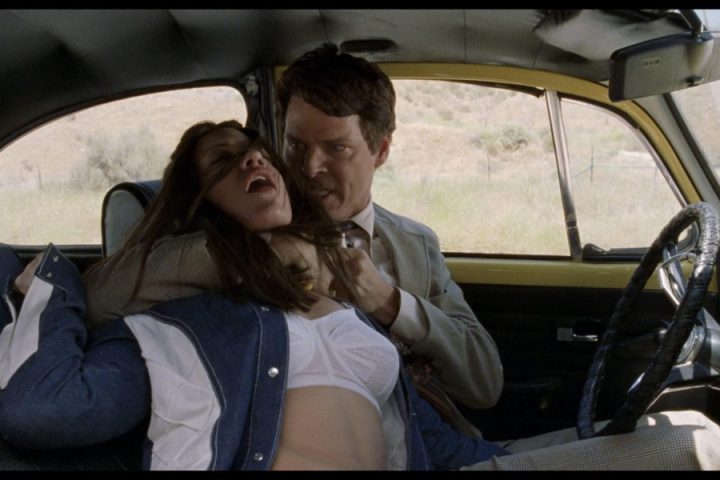Building things with curvature is no easy task. Ancient civilizations struggled to figure out how to make arches. The key is to provide support until the curved structure can hold itself. Once the dome is complete, if it’s done correctly, it will be stable. But reaching that point is easier said than done.
For the Sphere, this process happened twice. The auditorium dome required 32 trusses, each weighing 100 tons, to sustain the structure. Above it, there is an exosphere that is 30 percent taller than the dome. Just imagine pouring concrete into the structure and installing a massive amount of LEDs both inside and outside. The scale of this project is truly mind-boggling.
“It’s other-worldly,” said David Dibble, CEO of MSG Ventures, the company responsible for the building’s technology, in an interview with Popular Mechanics. “It took an immense amount of brilliance to construct this place.”
The Sphere’s internal screen boasts a 16K resolution across its 14,900 square meters (160,000 square feet), making it the largest high-resolution screen in the world. Each diode is positioned just a few millimeters away from the next, creating an incredible viewing experience. Attendees of the last two weeks of concerts, including U2’s residency until December, have raved about the immersive experience. However, achieving such precise positioning was no easy feat.
“That is pretty tough,” added Paul Westbury, executive vice president of development and construction at Sphere Entertainment, in the same interview. “And then it gets tougher. The human eye is incredible and can detect even the slightest variance in geometric position. We had 189 million diodes spread across two soccer pitches, and none could be out of position by more than the thickness of a blade of grass.”
The external screen also required complex technology, as it would be exposed to the elements. The solution was to organize the LEDs into sealed pucks of 48, coated with a non-reflective black silicone. The exterior surface is covered with 1.23 million of these pucks. Cleverly, they can be easily replaced if they malfunction, using a simple push/pop/twist mechanism.
More Spheres are currently in the works, with proposals in London, UK, and plans to build them in other locations.
[h/t: Popular Mechanics]







